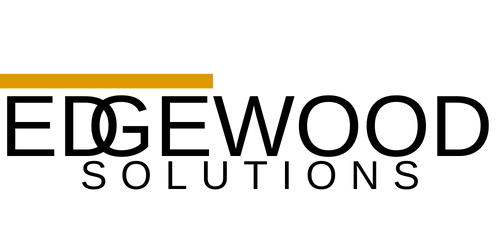Many church leaders struggle with effectively reaching their communities and maximizing growth. Did you know that 60% of churches don’t utilize marketing analytics to enhance their outreach strategies? In this post, we will explore essential marketing analytics tools for churches, how to implement them effectively, and the data insights that can drive congregation growth. By understanding these tools, you will learn how to optimize your email marketing, improve local search rankings, and leverage church software to ensure your outreach efforts are data-driven and impactful. This guide will address common pain points and provide actionable solutions to foster sustainable growth.
Understanding the Impact of Marketing Analytics on Church Growth
Data plays a crucial role in enhancing ministry
outreach. I will discuss how we can identify key metrics for congregation engagement, analyze community needs through data, and measure the effectiveness of church programs. Understanding these elements not only boosts
organization
efficiency but also enables
personalization, making our
outreach efforts more impactful. These insights position us as experts in fostering strong church growth.
Recognizing the Role of Data in Ministry Outreach
In ministry
outreach, data serves as a powerful tool for understanding and addressing the unique needs of our congregations. By employing
data analysis techniques, we can assess engagement levels and community sentiments, allowing us to refine our programs for better impact. Integrating
search engine optimization strategies into our
digital
outreach efforts enables us to reach a wider audience while leveraging
automation can simplify the process of tracking engagement metrics effectively.
Identifying Key Metrics for Congregation Engagement
Identifying key metrics for congregation engagement is essential for maximizing growth through effective
marketing analytics. I focus on tracking
web traffic, which helps me understand how visitors interact with our church's online presence. By utilizing
church data, I can measure engagement levels such as event participation and resource downloads, providing valuable
intelligence that informs our
outreach strategies. Additionally, incorporating
local SEO tactics can significantly enhance visibility, ensuring that our efforts reach the community effectively.
Analyzing Community Needs Through Data
Analyzing community needs through data is essential for developing a focused
marketing plan that drives church growth. By assessing demographic information and community interests, I can tailor our advertising campaigns to resonate with potential congregants. For instance, creating targeted landing pages based on specific community feedback ensures our
church marketing efforts are innovative and relevant, ultimately fostering deeper connections with those we aim to serve.
Measuring the Effectiveness of Church Programs
Measuring the effectiveness of church programs is vital to understanding our
return on investment in
outreach initiatives. I utilize
analytics tools to track participation rates and engagement levels, which offers insights into what captures the congregation's
attention. By integrating effective
graphic design in our marketing materials and optimizing our
search engine presence, we can enhance visibility and more accurately assess how well our programs meet community needs.
Exploring Essential Marketing Analytics Tools for Churches
Data plays a crucial role in enhancing ministry
outreach. I will discuss how we can identify key metrics for congregation engagement, analyze community needs through data, and measure the effectiveness of church programs. Understanding these elements not only boosts
organization
efficiency but also enables
personalization, making our
outreach efforts more impactful. These insights position us as experts in fostering strong church growth.
Recognizing the Role of Data in Ministry Outreach
In ministry
outreach, data serves as a powerful tool for understanding and addressing the unique needs of our congregations. By employing
data analysis techniques, we can assess engagement levels and community sentiments, allowing us to refine our programs for better impact. Integrating
search engine optimization strategies into our
digital
outreach efforts enables us to reach a wider audience while leveraging
automation can simplify the process of tracking engagement metrics effectively.
Identifying Key Metrics for Congregation Engagement
Identifying key metrics for congregation engagement is essential for maximizing growth through effective
marketing analytics. I focus on tracking
web traffic, which helps me understand how visitors interact with our church's online presence. By utilizing
church data, I can measure engagement levels such as event participation and resource downloads, providing valuable
intelligence that informs our
outreach strategies. Additionally, incorporating
local SEO tactics can significantly enhance visibility, ensuring that our efforts reach the community effectively.
Analyzing Community Needs Through Data
Analyzing community needs through data is essential for developing a focused
marketing plan that drives church growth. By assessing demographic information and community interests, I can tailor our advertising campaigns to resonate with potential congregants. For instance, creating targeted landing pages based on specific community feedback ensures our
church marketing efforts are innovative and relevant, ultimately fostering deeper connections with those we aim to serve.
Measuring the Effectiveness of Church Programs
Measuring the effectiveness of church programs is vital to understanding our
return on investment in
outreach initiatives. I utilize
analytics tools to track participation rates and engagement levels, which offers insights into what captures the congregation's
attention. By integrating effective
graphic design in our marketing materials and optimizing our
search engine presence, we can enhance visibility and more accurately assess how well our programs meet community needs.
Exploring Essential Marketing Analytics Tools for Churches
Setting up
analytics on our
church website is the first step to understanding our online presence. I will discuss how to monitor
social media engagement and growth, track email campaign performance metrics, and utilize mobile app
analytics for increased congregant interaction. Each of these strategies forms a comprehensive approach to leveraging data for effective
outreach, supported by insights from a
Christian marketing agency.
Setting Up Analytics on the Church Website
Setting up
analytics on the
church website is a fundamental step towards leveraging
marketing analytics for effective
outreach. By integrating tools like Google
Analytics, I can track user
behavior, engagement levels, and the impact of our
creativity on online interactions. Additionally, connecting our
accounting software with these
analytics allows me to assess our growth initiatives funded by programs like the
Google Grant, ensuring that our resources are aligned with the needs of our congregation.
- Integrate Google
Analytics for tracking visitor
behavior.
- Use
creativity to enhance user experience on the
church website.
- Connect
accounting software for better resource management.
- Monitor engagement to align
outreach strategies effectively.
- Utilize
Google Grant funding to boost online presence.
Monitoring Social Media Engagement and Growth
Monitoring
social media engagement and growth is critical for understanding our
target audience and refining our
outreach strategies. By utilizing
sentiment analysis tools, I can gain valuable insights into how the community perceives our online presence and message. This analysis not only helps in shaping our
online advertising efforts but also informs our
web design choices, ensuring we create a visually appealing and user-friendly experience that resonates with congregants and potential members alike.
Tracking Email Campaign Performance Metrics
Tracking email campaign performance metrics is essential for
nonprofit organizations like ours to understand the effectiveness of our
outreach efforts. By monitoring key indicators like open rates, click-through rates, and donations generated from specific campaigns, I can refine our email strategies to better engage our congregation. Furthermore, integrating our
email marketing
infrastructure with
social media platforms helps gather email addresses and encourages community involvement, enhancing our overall engagement and increasing support for our church initiatives.
Utilizing Mobile App Analytics for Congregant Interaction
Utilizing mobile app
analytics is a fundamental
strategy for enhancing congregant interaction and driving church growth. By tracking user
behavior within the app, such as engagement with
media content and participation in events, I can identify what resonates with our consumers. Implementing best practices, like personalized messaging through
text messaging features, allows us to communicate effectively and foster a sense of community, all while leveraging
digital
marketing analytics to refine our
outreach efforts.
Utilizing Data Insights to Foster Congregation Growth
By utilizing data insights, I can personalize communication based on
analytics, ensuring that
outreach resonates with our congregation. Tailoring services and events to member preferences allows us to create more engaging experiences, while identifying and reaching out to potential new members expands our community. Additionally, enhancing
donation campaigns through data-driven approaches boosts support for our church initiatives, leveraging my
knowledge in
Christian marketing to optimize our
marketing campaigns.
Personalizing Communication Based on Analytics
Personalizing communication based on
analytics is key to fostering a more engaged congregation. I analyze data on member preferences and engagement patterns to tailor messaging that resonates with our audience. For example, by segmenting our congregation based on participation in different ministries, I can send targeted communications that highlight events and resources aligned with their interests, ensuring our
outreach efforts are relevant and impactful.
Tailoring Services and Events to Member Preferences
Tailoring services and events to member preferences is essential for increasing engagement within our church community. By analyzing attendance data and feedback, I can identify trends that reflect the interests of our congregation. This enables me to create targeted events that truly resonate with our members, fostering a sense of belonging and enhancing participation in ministry activities.
- Use attendance data to recognize popular services.
- Gather member feedback to tailor event themes and topics.
- Implement targeted marketing strategies based on insights.
- Enhance community connections through personalized
outreach.
Identifying and Reaching Out to Potential New Members
Identifying and reaching out to potential new members is a fundamental aspect of maximizing church growth through effective
marketing analytics tools. By analyzing demographic data and community engagement metrics, I can pinpoint individuals who may be interested in our church's offerings. This allows me to tailor
outreach efforts specifically to these prospective members, such as sending personalized invitations to events or targeted email campaigns that highlight our congregation's unique message and activities.
- Analyze demographic data to identify potential new members.
- Utilize community engagement metrics to tailor
outreach strategies.
- Create personalized invitations and emails for targeted communication.
- Highlight unique church offerings and activities to attract interest.
- Implement follow-up strategies to ensure continued engagement.
Enhancing Donation Campaigns Through Data-Driven Approaches
Enhancing
donation campaigns through data-driven approaches is essential for maximizing our church growth. By leveraging
analytics, I can identify which fundraising strategies resonate most with our congregation, allowing us to tailor our
outreach accordingly. For instance, analyzing past
donation patterns helps me to understand peak giving periods and donor preferences, enabling the development of targeted campaigns that effectively engage our community:
- Utilize historical
donation data to identify trends.
- Tailor campaigns based on community engagement metrics.
- Implement targeted follow-ups to encourage continued support.
- Analyze response rates to optimize messaging for future campaigns.
Case Studies: Churches Thriving With Marketing Analytics
In this section, I will share success stories of churches that have effectively increased attendance through targeted
marketing analytics. I will also discuss how
data analysis has boosted community engagement and improved member retention. Additionally, I’ll explore how insights gathered from
analytics have expanded
outreach programs, demonstrating the practical benefits of leveraging these tools for church growth.
Success Stories of Increased Attendance
Many churches have experienced remarkable growth in attendance by incorporating effective
marketing analytics tools into their
outreach strategies. For instance, if a local church utilized
Google Analytics to measure their online engagement and identify trends in visitor traffic. This information can be used in targeted messaging and event planning. The key to growth is to manage and measure your key performance indicators.
- Analyzed
web traffic to understand visitor interests.
- Tailored events and communication to target demographic needs.
- Monitored engagement metrics for continuous improvement.
Community Engagement Boosted by Data Analysis
Data analysis has proven to be a pivotal factor in enhancing community engagement for various churches. For example, if a congregation implemented a systematic approach to analyzing feedback from their events, which allowed them to adjust their programming to better address the needs and interests of their members. By utilizing
marketing analytics tools, they could significantly improved attendance at community service events, showcasing how tailored strategies can lead to stronger connections within the congregation and retention of existing members.
Improving Member Retention Using Insights
Improving member retention is a critical aspect of church growth, and I have seen firsthand how utilizing
analytics can lead to positive outcomes. By closely monitoring engagement metrics, such as attendance trends and participation in events, I can identify members who may need additional support or encouragement. For example, by analyzing these insights a church could implement a targeted follow-up
strategy, to increase in member retention over the course of a year:
Expanding Outreach Programs With Analytics Feedback
Expanding
outreach programs with feedback from
marketing analytics has proven invaluable for many churches that aim to enhance their community impact. By systematically analyzing data from engagement metrics, I've observed how feedback can direct the development of targeted initiatives that resonate with the congregation. For example, one church used
analytics insights to identify interest in community service, leading to the creation of targeted
outreach events that increased participation by fostering deeper connections among members and local residents.
Best Practices for Maximizing Church Growth With Analytics
Best Practices for Maximizing Church Growth With Analytics
To effectively maximize church growth through
marketing analytics, I focus on several best practices. Regularly reviewing and acting on data findings allows me to stay informed and responsive. Training church staff on
analytics tools enhances our capacity to utilize insights effectively. I also prioritize protecting privacy while collecting data, ensuring trust within our congregation. By setting achievable goals based on
analytics, I can create focused
outreach strategies. Lastly, continuously adapting these strategies fosters ongoing growth and engagement within our church community.
Regularly Reviewing and Acting on Data Findings
Regularly reviewing and acting on data findings is crucial for maximizing church growth through
marketing analytics. By consistently analyzing engagement metrics, I can identify trends and make informed decisions that enhance our
outreach initiatives. For example, if I notice a decline in event participation, I can promptly adjust our promotional strategies or content to better align with the congregation's interests, ensuring our
outreach efforts remain effective and responsive to community needs.
Training Church Staff on Analytics Tools
Training church staff on
analytics tools is a vital step in maximizing our
outreach efforts and driving church growth. I ensure that our team is well-versed in using platforms like Google
Analytics, offering them hands-on workshops and practical exercises that build confidence in interpreting data. With this expertise, everyone becomes capable of analyzing key metrics, allowing us to make informed decisions that enhance our engagement strategies and ultimately strengthen our connection with the congregation.
Protecting Privacy While Collecting Data
Protecting privacy while collecting data is essential for maintaining trust within our congregation. I make it a priority to inform our members about the data we collect and the specific purposes for which it will be used. Implementing robust security measures, such as encryption and access controls, further ensures that sensitive information is safeguarded, assuring our congregation that their privacy is respected:
- Informing members about data collection practices enhances transparency.
- Implementing strong security measures protects sensitive information.
- Regularly reviewing privacy policies keeps practices up-to-date.
Setting Achievable Goals Based on Analytics
Setting achievable goals based on
analytics is essential for driving church growth effectively. I make it a priority to analyze historical data and current engagement metrics, allowing me to establish realistic benchmarks that align with our
outreach initiatives. For instance, if I observe a steady increase in event participation, I set specific targets for future events, ensuring they are both ambitious and attainable, which keeps our congregation motivated and engaged.
Continuously Adapting Strategies for Ongoing Growth
Continuously adapting strategies for ongoing growth is a foundational aspect of utilizing
marketing analytics tools effectively within our church. I analyze the data regularly to identify trends and shifts in member engagement, allowing us to refine our
outreach efforts promptly. For example, if I notice a dip in attendance at specific events, I can adjust our messaging or format based on feedback and engagement metrics to better align with our congregation's interests, ensuring that we remain relevant and impactful.
Conclusion
Maximizing church growth through
marketing analytics tools is essential for understanding and responding to the needs of our congregations. By effectively tracking key metrics and analyzing community engagement, churches can tailor their
outreach efforts to foster deeper connections with both existing and potential members. Investing in data-driven strategies empowers church leaders to make informed decisions, ultimately enhancing participation and support for church initiatives. Embracing these
analytics not only boosts engagement but also positions churches for sustained growth and a stronger impact in their communities.
Let's grow your church together - Schedule a call here.










